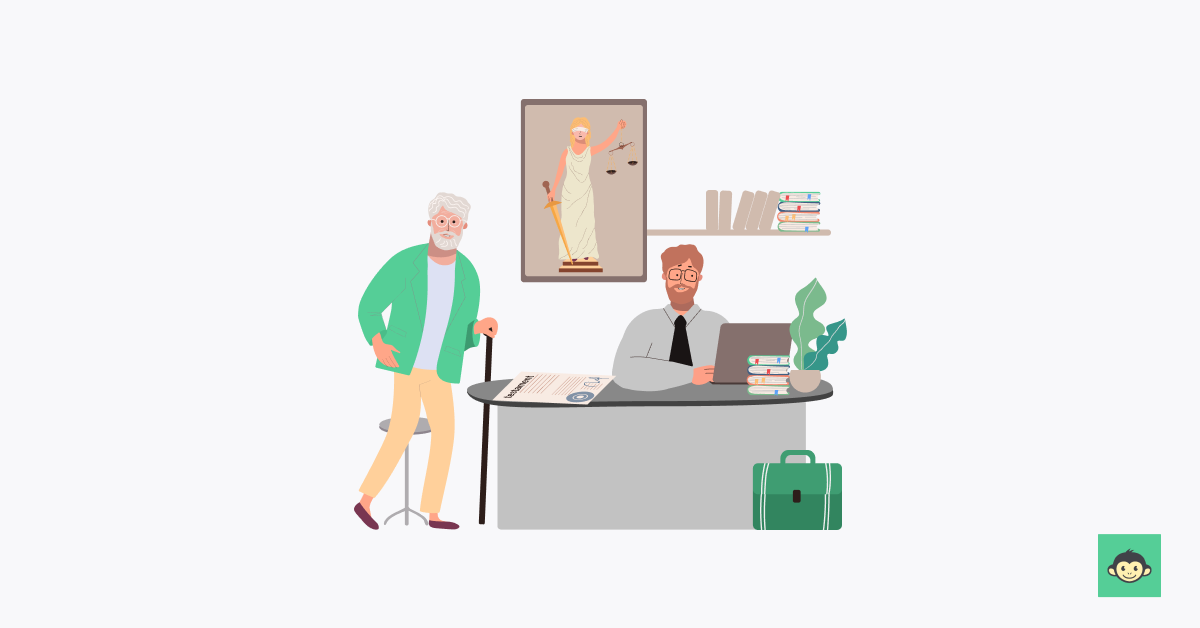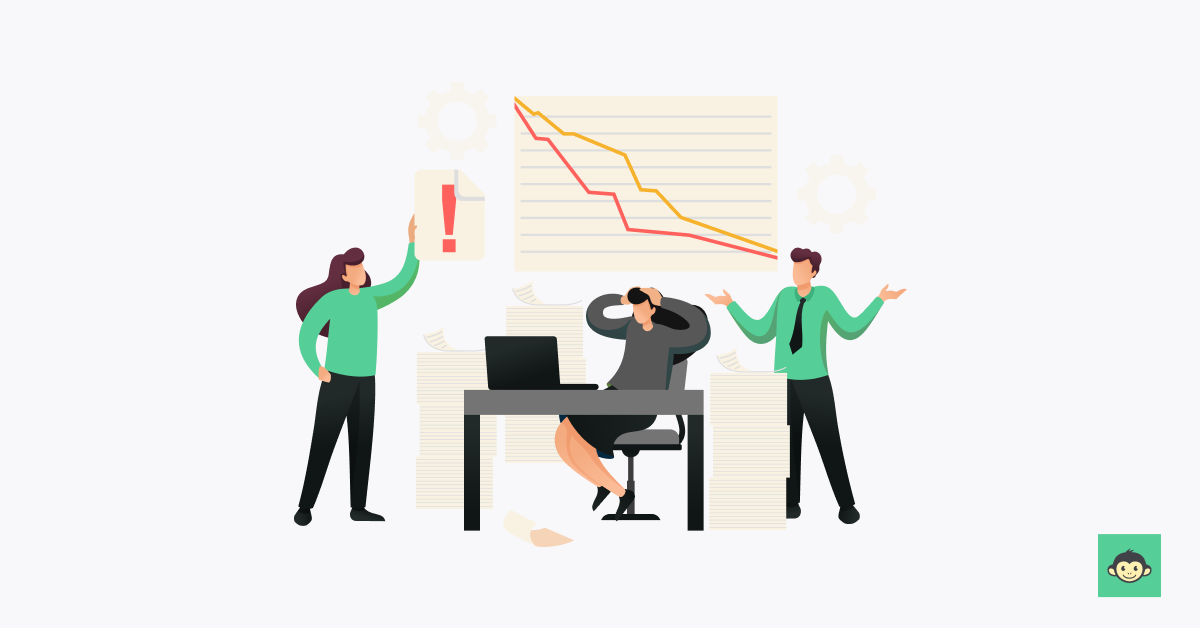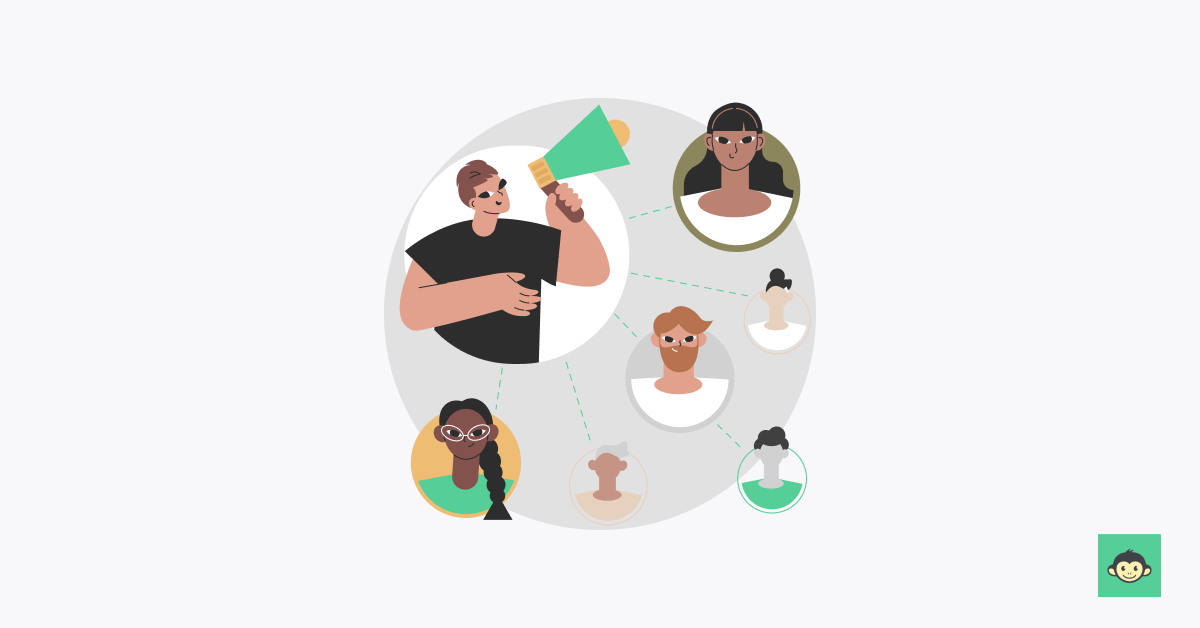Ageism in the workplace: Statistics, causes and top strategies to curb ageism in the workplace in 2024

One in four of America's workers is 55 or older, yet age discrimination against older Americans persists in offices, keeping many of those people out of jobs. Age discrimination remains a significant hurdle in today's global workforce, despite legal protections and a growing emphasis on diversity and inclusion.
Statistics show a concerning trend: A whopping 8 out of 10 workers report witnessing or experiencing ageism at work. This bias affects both older workers (aged 40+) and younger workers just entering the workforce.
This blog post will delve into the issue of ageism in the workplace. We'll explore the statistics that reveal its prevalence, examine the root causes of age bias, and provide actionable strategies to combat this persistent problem.
By fostering a more inclusive work environment that values experience alongside new ideas, we can create a stronger and more successful workforce for everyone.
Ageism in the workplace definition

We live in a culture that barrages us with negative messages about aging. Well, in a similar vein, ageism in the workplace refers to the systemic discrimination, bias, or prejudice against individuals based on their age, whether they are perceived as too young or too old to perform certain tasks or fulfill specific roles within an organization.
This discriminatory behavior can manifest in various forms, including but not limited to hiring practices, promotions, job assignments, and opportunities for professional development. Ageism affects both older people and younger workers, creating barriers that hinder their ability to fully participate and succeed in the workforce.
What is the difference between age discrimination and ageism?

Age discrimination and ageism are related concepts, but they differ in scope and application:
Age discrimination:
Age discrimination refers to the unfair treatment of an individual or group based on their age. This discrimination can occur in various contexts, including employment, housing, education, and healthcare.
In the workplace, age discrimination typically involves actions such as refusing to hire or promote someone, terminating their employment, or subjecting them to adverse treatment because of their age.
Age discrimination in the workplace is often prohibited by laws and regulations aimed at protecting individuals from unfair treatment based on age, such as the Age Discrimination in Employment Act (ADEA) in the United States.
Ageism:
Ageism, on the other hand, is a broader concept that encompasses attitudes, beliefs, stereotypes, and prejudices about individuals or groups based on their age.
Ageism can manifest in various ways, including stereotypes about older people or younger people, assumptions about their abilities or limitations, and discriminatory behavior or policies that disadvantage individuals based on their age.
Unlike age discrimination, which involves specific actions or behaviors, ageism reflects broader societal attitudes and perceptions that influence how individuals are perceived and treated based on their age.
Who experiences ageism in the workplace?

Ageism can affect individuals of various age groups, though it often disproportionately impacts older workers. Here's a breakdown:
Older workers:
Older workers, typically those aged 40 and above, are particularly vulnerable to ageism. They may face stereotypes and biases based on assumptions about their productivity, adaptability to new technologies, or willingness to learn new skills.
Older workers may encounter barriers to hiring, promotions, and opportunities for professional development due to age-related discrimination.
Younger workers:
While less common, younger workers can also experience ageism in the workplace, particularly in industries, jobs or roles where youthfulness is perceived as advantageous. They may face stereotypes about their lack of experience or maturity, leading to underestimation of their capabilities or exclusion from certain opportunities.
Additionally, younger workers may encounter challenges in being taken seriously or earning respect from older colleagues or supervisors.
Ageism in the workplace can affect individuals across half the age spectrum, but its manifestations and impact may vary depending on factors such as industry norms, organizational culture, and societal attitudes toward women and age.
Addressing ageism requires a comprehensive approach that promotes inclusivity, diversity, and equal opportunities for individuals of all ages.
What are the 4 types of ageism at work?

Ageism in the workplace can manifest in various forms, reflecting biases and stereotypes based on age. Here are four common types of ageism that individuals may experience in work environments:
Hiring bias
This type of ageism occurs during the recruitment and hiring process. Employers or hiring managers may exhibit bias, making the job search only harder against older applicants, by assuming they are less adaptable, less technologically savvy, or less energetic compared to younger candidates.
Conversely, younger applicants may face ageism if they are perceived as lacking experience or maturity.
Promotion and advancement discrimination
Ageism can also influence decisions regarding promotions and career advancement. Older employees may be overlooked for promotions or leadership opportunities based on assumptions about their ability to learn new skills or lead teams effectively.
Similarly, younger employees may encounter barriers to advancement if they are perceived as lacking experience or being too inexperienced for higher-level roles.
Training and development opportunities
Ageism can affect access to training and professional development opportunities. Older workers may be denied opportunities for skills training or career development under the assumption that they are less willing or able to learn new skills.
Conversely, younger workers may be denied training opportunities if they are seen as transient or less committed to the organization.
Retirement pressures
Ageism can also manifest in pressure for older workers to retire prematurely. An employer or colleagues may assume that older workers are nearing retirement age and may seek to encourage or push them out of the workforce, regardless of their skills, experience, or willingness to continue working.
This type of ageism can deprive older workers of the opportunity to contribute their knowledge and expertise to the organization.
5 Ageism in the workplace statistics you should know

- Studies from the US Bureau of Labor Statistics indicate that while people in the 55 to 64 age range displayed a labor force participation rate of 65.2 percent in 2022, this number falls to 26.6 percent for individuals aged 65 to 74. The sharp drop-off in employment between workers in their fifties and late sixties is of concern, especially if many older employees don’t have enough saved up for retirement. Biased practices have made it difficult for veteran professionals to remain in the workforce, prompting legislative action to level the playing field.
- SHRM states 11 percent of HR professionals agree that older employees are not always treated as fairly as younger employees.
- The studies also indicate that common age stereotypes remain somewhat prevalent. According to people managers, older employees are more likely to be perceived by others as not competent with technology (49 percent), resistant to new ways of doing things (38 percent), and stubborn or grumpy (48 percent).
- 11 percent of HR professionals agree that older employees are not always treated as fairly as younger employees.
- 26 percent of U.S. workers age 50 and older say they have been the target of age-related remarks in the workplace over the past six months.
Impact of ageism in employee attrition according to those who have experienced age discrimination

The impact of ageism on employee attrition can be significant, affecting both individual employees and organizations as a whole. Here are several ways in which ageism can contribute to employee attrition:
Early retirement: Ageism may push older workers, typically those aged 40 and above, to retire prematurely. when older employees face age discrimination or experience age bias during the hiring process or in job opportunities, they may choose to retire early rather than continue facing such challenges.
This early exit from the labor market or the labor force, can lead to talent loss for the organization and disrupt succession planning efforts.
Decreased employee engagement and morale: Ageism can erode employee engagement and morale among both the many older workers, and younger workers. Older employees who experience ageism may feel undervalued or marginalized, leading to decreased engagement and job satisfaction.
Similarly, younger workers may feel overlooked or underestimated due to age-related stereotypes, affecting their motivation and commitment to the organization. This decreased engagement can result in higher turnover rates as employees seek out workplaces where they feel respected and valued for their contributions.
Loss of institutional knowledge and experience: Ageism-related attrition can result in the loss of valuable institutional knowledge and experience. Older workers often possess extensive industry experience and skills that are difficult to replace.
When these employees leave the organization due to ageism or retirement pressures, the organization may struggle to fill the knowledge gap, leading to decreased productivity and efficiency.
Negative impact on diversity and inclusion efforts: Ageism undermines diversity and inclusion efforts within organizations. When employees of all ages do not feel valued or included due to age-related biases or stereotypes, it creates a hostile work environment that contradicts efforts to foster diversity and inclusion.
This negative environment can lead to turnover among employees of all age groups who seek out more inclusive workplaces.
Reputational damage: Organizations that tolerate ageism or fail to address age-related biases risk reputational damage. Employees, customers, and other stakeholders may view the organization negatively if it is perceived as discriminatory or unfair towards employees based on their age.
This negative perception can harm the organization's brand image, making it less attractive to potential employees and customers alike.
7 Causes of ageism in the workplace

Understanding these causes is essential to addressing ageism effectively and creating a more inclusive work environment. In this section, we'll explore seven key causes of ageism in the workplace, shedding light on the factors that contribute to age-related discrimination and bias.
- Stereotypes and age bias: One of the primary causes of ageism in the workplace is the perpetuation of stereotypes and age bias. Older workers, younger workers, and job seekers may face age-related stereotypes that influence perceptions of their abilities, productivity, or suitability for certain roles. It can lead to age-based discrimination in hiring, promotions, and opportunities for professional development.
- Hiring practices: Ageism can be perpetuated through hiring practices that favor younger applicants or overlook older candidates. Some employers may have biases towards hiring younger workers, believing they are more adaptable to new technologies or more energetic, while others may prefer older workers for their experience but worry about their adaptability or retirement age.
- Organizational culture: An ageist culture within an organization can contribute to ageism in the workplace. If an organization's culture values youthfulness or fails to appreciate the contributions of older workers, it can create an environment where age-related biases and discrimination thrive. This can affect both older and younger employees, impacting their engagement, morale, and job satisfaction.
- Lack of awareness and training: Many employers and employees may not be aware of ageism or the consequences of age-related biases in the workplace. Without proper training and awareness programs, ageism can go unrecognized and unaddressed. Human resources departments can play a crucial role in addressing ageism by providing training on diversity, equity, and inclusion, including age-based discrimination and biases.
- Promotion and advancement practices: Ageism can influence promotion and advancement practices within organizations. Older employees may be passed over for promotions or leadership opportunities based on assumptions about their ability to learn new skills or lead teams effectively. Similarly, younger employees may be denied opportunities for advancement due to a perceived lack of experience or maturity.
- Retirement pressures: Pressure for older workers to retire prematurely can contribute to ageism in the workplace. Employers may assume that older workers are nearing retirement age and may seek to encourage or push them out of the workforce, regardless of their skills, experience, or willingness to continue working. This can deprive older workers of the opportunity to contribute their knowledge and expertise to the organization.
- Economic concerns: In challenging economic times, employers may turn to age-based discrimination as a cost-cutting measure. They may believe that hiring younger workers or replacing older workers with younger counterparts can result in lower salaries or benefit costs. However, this approach fails to recognize the value that employees of all ages bring to the organization and can perpetuate age-related biases and discrimination.
What are some examples of ageist phrases used at work?

Here are some examples of ageist phrases commonly used in the workplace:
- "You're overqualified for this position."
- "Shouldn't you be retiring soon?"
- "You're too young to understand."
- "We need fresh ideas from younger minds."
- "You're set in your ways because of your age."
- "We're looking for someone with more energy."
- "You should let the younger generation handle this."
- "You don't have enough experience for this role."
- "You're not tech-savvy enough for this job."
- "We need to bring in some new blood."
- "You're too old to learn new skills."
- "You should be focusing on family, not your career at this age."
- "You're at the peak of your career, so you should take on more responsibilities."
- "You're too young to be in a leadership role."
- "We're concerned about your ability to keep up with the pace."
These phrases can perpetuate age and sex-related stereotypes and biases, reinforcing ageism in the workplace. It's essential to be mindful of the language used and the messages conveyed to ensure a respectful and inclusive work environment for employees of all ages.
7 Strategies for leaders to combat ageism in the workplace

Recognizing and addressing ageism is crucial for creating a supportive and equitable work environment where employees of all ages feel valued and respected. Leaders play a pivotal role in shaping workplace culture and can drive change by implementing strategies to combat ageism.
In this section, we'll explore seven key strategies that leaders can adopt to address ageism in the workplace effectively. These strategies range from education and awareness-raising initiatives to updating hiring practices and fostering inter-generational collaboration.
- Educate and raise awareness: Leaders should initiate educational programs to increase awareness about ageism in the workplace. By educating employees about the detrimental effects of age bias and age discrimination, organizations can foster a more inclusive environment. Utilize research shows to demonstrate the negative impact of ageism and highlight the benefits of a diverse workforce.
- Review and update hiring practices: Examine hiring practices to ensure they are free from age-based discrimination. Implement age-blind hiring processes where possible, focusing on skills, qualifications, and experience rather than birth date or retirement age. This approach can help employers attract a broader range of job seekers and combat age bias during the hiring process.
- Foster inter-generational collaboration: Encourage collaboration between older workers and their younger counterparts. By fostering intergenerational teamwork, organizations can leverage the strengths and experiences of older employees while benefiting from the fresh perspectives and innovative ideas of younger workers. This approach can help break down ageist stereotypes and promote a more inclusive workplace culture.
- Provide equal opportunities for professional development: Ensure that older workers have equal opportunities for professional development and advancement. Offering training programs, mentoring opportunities, and career growth paths for older employees can combat ageism by demonstrating the organization's commitment to supporting all workers, regardless of age. Human resources departments can play a crucial role in implementing and promoting these initiatives.
- Address ageist language and stereotypes: Promote language and communication that respects employees of all ages. Leaders should discourage ageist phrases and stereotypes, such as "You're too old to learn new skills" or "You're too young to be in a leadership role." Encourage open dialogue about ageism in the workplace and provide guidance on respectful communication to employees.
- Implement anti-discrimination policies and laws: Develop and enforce anti-discrimination policies that explicitly address age-based discrimination. Ensure compliance with relevant employment laws, such as the Age Discrimination in Employment Act (ADEA) and state-specific laws protecting workers from age discrimination. By taking a proactive approach to compliance, organizations can protect workers and demonstrate their commitment to combating ageism.
- Lead by example: Leaders should set a positive example by valuing employees of all ages and promoting a culture of respect and inclusivity. By demonstrating inclusive leadership behaviors, such as listening to employees' concerns, recognizing their contributions, and providing support when needed, leaders can inspire others to combat ageism and create a supportive work environment for employees of all ages.
Significance of DEI surveys in curbing ageism in the workplace
DEI (Diversity, Equity, and Inclusion) surveys are crucial tools for tackling ageism in the workplace. These surveys help companies understand how employees of all ages, including older workers and younger counterparts, experience age discrimination and age bias. By asking employees about their experiences and perceptions related to age, companies can identify areas where age discrimination persists and combat ageism effectively.
Understanding the problem through these surveys allows companies to develop targeted strategies to combat ageism in hiring processes and protect workers from age-based discrimination. For instance, by reviewing and updating job descriptions and policies, organizations can ensure they support job seekers and older respondents equally.
Additionally, fostering intergenerational collaboration can help break down ageist stereotypes, promoting a workplace ageism-free environment where employees of all ages feel valued and included. Regular DEI surveys also enable companies to measure progress, create accountability, and demonstrate their commitment to combat ageism and promote an inclusive workforce.
Conclusion
Addressing ageism in the workplace is essential for fostering a diverse and inclusive environment where employees of all ages feel valued and respected. By implementing strategies like DEI surveys, organizations can identify and combat age discrimination effectively, creating a more equitable workplace for everyone.
At CultureMonkey, we're committed to helping organizations tackle ageism and promote inclusivity through our comprehensive DEI surveys. Our surveys are designed to make everyone feel heard and seen, empowering companies to build a culture where diversity is celebrated, and age is not a barrier to success. Reach out to us and see if we can help your org grow!
FAQs
What are the causes of ageism in the workplace?
Ageism in the workplace is often driven by stereotypes and biases that equate age with diminished ability or lower productivity. Hiring practices favoring younger workers or presuming older ones are less adaptable exacerbate age of discrimination in the workplace. In addition to this, an organizational culture that values youthfulness over experience makes these ageist attitudes seem much more acceptable.
What is the definition of ageism?
Ageism is a type of prejudice or discrimination against individuals based on their age, especially targeting older adults. Ageism often encompasses stereotypes, biases, and negative attitudes towards people of certain ages, leading to unfair treatment in various aspects of life, including employment, healthcare, social interactions, daily interactions, opportunities, and personal relationships. Addressing ageism requires awareness, education, and proactive efforts.
What is ageism and 5 ways to stop it?
Ageism involves prejudice or discrimination based on age, impacting both younger and older individuals. To address this issue, organizations can implement age-blind hiring practices and foster inter-generational collaboration. Providing equal opportunities for professional development, addressing ageist language and stereotypes, and educating employees about age bias are also essential steps in combating ageism.
What is the problem with ageism in the workplace?
Ageism creates barriers for both younger and older workers, limiting opportunities and perpetuating stereotypes. It can lead to unfair hiring practices, reduced career advancement for older employees, and dismissal of younger workers' capabilities. Ageism undermines diversity and inclusion, hindering productivity and creating a less harmonious work environment.



